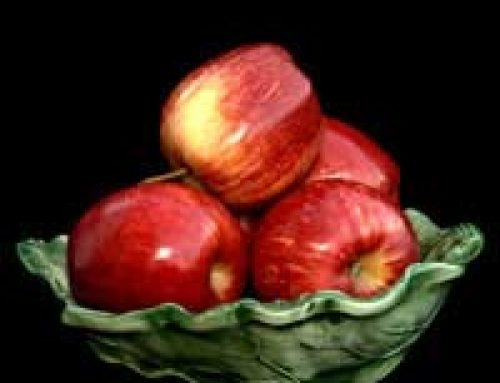
Espalier is the art of training trees, usually fruit trees, in two-dimensional forms, often against a wall. This can be seen in older kitchen gardens in the United Kingdom, particularly those attached to country manor houses, although it is a form that has been in and out of fashion since well before then.
Espalier trained fruit trees are cajoled, throughout their growing period, two-dimensional shapes, usually into lateral or fan shaped patterns although there are many variations on those themes. The technique means that each leaf is less likely to be overshadowed by a neighbour so all the leaves get the benefit of full sun.
Increased Benefits from Training Against a Wall
Although the fruit trees can be trained using a self-supporting framework, perhaps of trellis or bamboo stakes, it is more usual for them to be planted against a wall. As well as providing plentiful anchor points for the stays and ties necessary to train the tree each year, it also increases the temperature of the microclimate around the tree. The sun warms the wall during the day and then that heat is released during the cooler night time.
This effect, coupled with the shelter provided by the wall and the even capture of the sun’s rays all over the tree, increases crop sizes and brings fruit to maturity much earlier in the season. Results are also significantly better if the espalier training is done against a south facing wall in an enclosed but light garden.
Safe Gardening and Espalier
So what’s this got to do with safe gardening? The other major functional benefit of training fruit trees in this way, apart from the benefits to fruit growing itself, is that the splayed out limbs of the espalier form make it very easy to reach the fruit.
This was perhaps one of the major benefits of the espalier technique to growers in ancient Middle Eastern areas where the technique is thought to have originated. Any innovation which sped up the production and harvesting fruit so that it could be placed in a market earlier than any rivals would have been embraced wholeheartedly.
Safe Harvesting
This means no more messing around with tall ladders, climbing trees or bashing the limbs of the fruit trees with long sticks to get at the fruit. Most fruit trees will grow to a significant height if left to grow unchecked and if the fruit is 25 feet off the ground then it can be quite dangerous trying to harvest it.
The harvest of an espalier trained fruit tree, by contrast, can be safely collected by one person standing in front of it, perhaps using a stepladder to reach the highest branches. But the important thing about the height of a tree pruned in this way is that the height is the choice of the grower, not the tree.
Inclusive Gardening
This makes espalier training an efficient and inclusive way of growing fruit trees. The training and pruning of the tree can be done by many people with physical difficulties, as can the harvesting of the fruit. If the trees are trained against a wall, as discussed earlier, and there is a solid or semi-solid path directly in front of them, then wheelchair users can get involved too.
Dramatic Backdrop
The final thing to say about espalier training is that fruit trees trained in this way, quite apart from the benefits in growing and harvesting the fruit, just look fantastic.
The serried ranks for trees can be a dramatic backdrop to any garden, whether it’s formal or informal, and you get the benefit of the produce too.





What are espalier/fans made from? Regards Geoffrey
You can use wires or a combination of wires and a wooden structure of dowelling or bamboo.